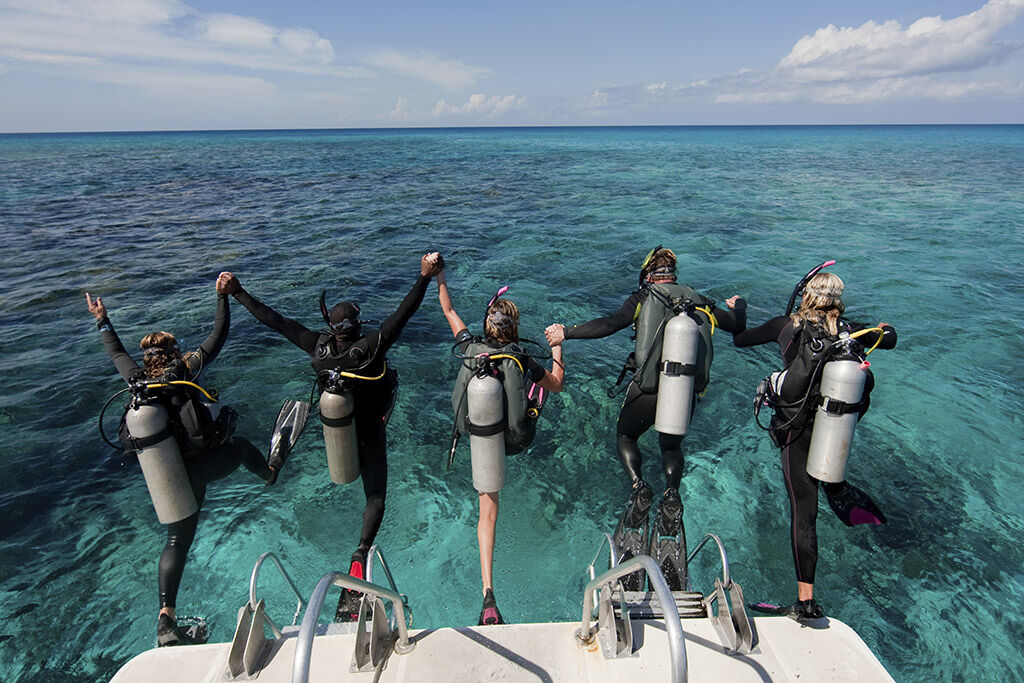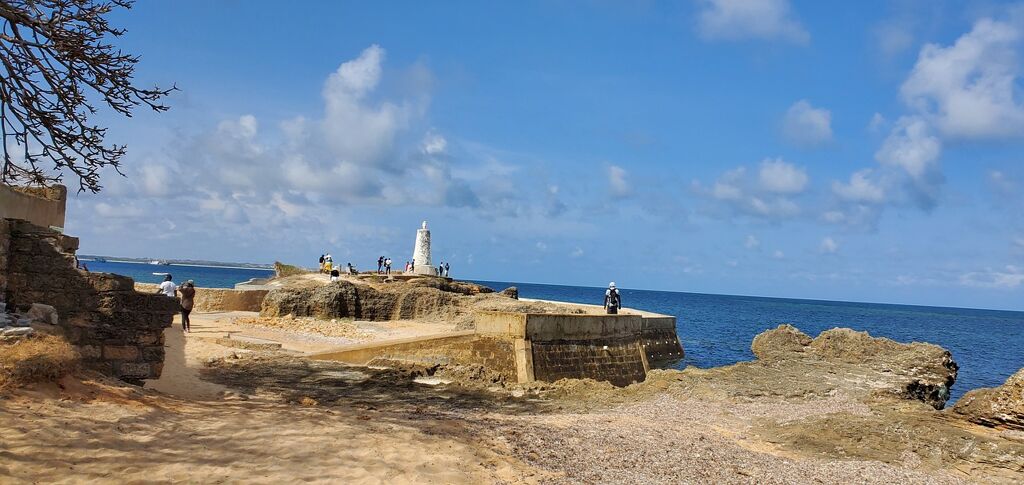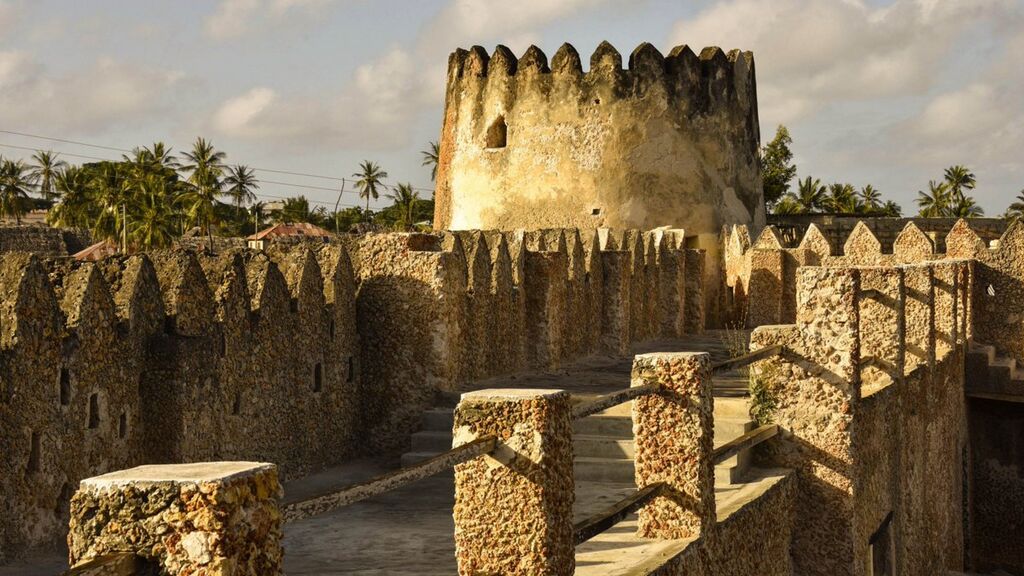Did you know Kenya’s coastline extends over 536 kilometres? The various beaches along this coastline in Kenya offer distinct experiences that suit different preferences. From the world-renowned Diani Beach to the timeless Lamu Island, the coastline is dotted with numerous breathtaking destinations to explore.
Kenya’s coastline has been a lucrative hub for explorers, traders, and adventurers from around the globe for centuries. Its strategic location on the Indian Ocean makes it a pivotal point for maritime trade routes, connecting Africa to the Middle East, Asia, and beyond. The region’s rich history is reflected in the bustling port cities and peaceful Mombasa, Malindi, Lamu and Watamu shores.
This article invites you to join us on a virtual journey through Kenya’s coastal paradise. Immerse yourself in the numerous cultures that inhabit the shores of Kenya and explore the secrets of its magnificent beaches. The beaches of Kenya offer various activities and experiences catering to all interests. Whether you’re a beginner or an experienced beach-goer, there’s always something you can do and purposefully enjoy. Here, each grain of sand has a story, and every wave whispers a promise of adventure.
So, strap up, put on your reading glasses and join us.
Diani Beach: The Jewel of the Coast
Diani Beach is a world-renowned destination gifted with natural beauty, a rich cultural heritage, and a centuries-old history. Historically, the Digo people, part of the larger Swahili civilisation, inhabited the area. Indigenous communities traded with merchants from Arabia and Asia, leaving a cultural legacy that still influences the region today.
The land on which Diani sits was part of the British East Africa Protectorate during colonial times. Its strategic location along the coast made it a focal point for trade and development. The remnants of colonial architecture, like the iconic Diani Beach Hotel, serve as reminders of this period in Diani’s history.
Diani Beach became a popular tourist spot during the latter half of the 20th century. Its beautiful sands and serene atmosphere started drawing in travellers worldwide. It has since gained a reputation as one of Kenya’s top beaches. The construction of hotels, resorts, and vacation homes transformed Diani into a bustling resort town, while its proximity to wildlife reserves like Shimba Hills National Reserve upped its significance.
Today, Diani Beach continues to enchant travellers with splendour and warm hospitality. Consistently ranked among the world’s best tourist destinations, it has earned a reputation as one of the leading beaches in Kenya.
Activities at Diani Beach
Diving, Snorkelling and Water Sports
Diani Beach boasts numerous marine parks that preserve the region’s marine life and ecosystem. Visitors can enjoy exploring the underwater world by snorkelling and diving in these protected parks.
Kenyan waters are home to various marine creatures, including reef sharks. Green and Hawksbill turtles, endangered species, can also be spotted while exploring the area’s waters. Visitors are advised to bring an underwater camera to capture their incredible experiences.
Diani Beach is the perfect destination for water sports enthusiasts. You can choose from various activities such as kayaking, jet skiing, windsurfing, kitesurfing, paddleboarding, and scuba diving.

Shimba Hills National Reserve
The Shimba Hills National Reserve is a beautiful rainforest park situated just 15 kilometres away from Diani Beach. It is a small but protected sanctuary, covering an area of 300 square kilometres. The reserve is home to various animals, including elephants, mongooses, monkeys, and numerous bird species. Visitors can also witness the endangered Sable Antelope, a treat to watch in their natural habitat.

The reserve is also home to the Mwalunganje Elephant Sanctuary. The sanctuary helps to reduce human-elephant conflict and ensures balance in the threatened ecosystem. Additionally, it plays a vital role in protecting elephants from poachers. Visitors can enjoy an immersive experience by walking through the sanctuary. During the walk, they can learn about the elephants’ habits and behaviour from their knowledgeable tour guides.
Kitsite-Mpunguti Marine Park
If you want a unique and unforgettable marine experience on Kenya’s beaches, consider visiting Kitsite-Mpunguti Marine Park. Located just 50km from Diani Beach, this protected sanctuary spans over 39km² and houses a variety of marine life. The park is perfect for diving, snorkelling, and bird-watching and also offers easy access to the Shimoni slave caves.
For the best experience, planning your trip between October and April is advisable. During this time, the seas are calmer and the waters more transparent. This will allow you to fully appreciate the natural wonders that make Kitsite-Mpunguti Marine Park a special place.
Malindi Beach Town: Kenya’s Coastal Paradise
Malindi is a coastal town that has been a meeting point for different civilisations for over a millennium. Its streets and buildings, influenced by various cultures over the years, reflect its rich heritage that goes back centuries.
Malindi’s history as a trading hub dates back to the 13th century when Arab merchants traded spices, ivory, and gold along the East African coast. Portuguese explorers, led by Vasco da Gama, established a presence in Malindi in the early 16th century. They built the iconic Vasco da Gama Pillar, which still stands today as a testament to their maritime expeditions. Swahili culture also played a significant role in Malindi’s history and is evident in the local architecture, cuisine, and language.
Today, it is a popular and sought-after destination among the beaches in Kenya, attracting tourists from all over the world. These come to enjoy its crystal-clear waters, white sandy beaches, and various activities, as illustrated below.
Sights and Sounds of Malindi
Vasco da Gama Pillar
Standing tall and proud on the shores of Malindi Beach is the Vasco da Gama Pillar, a symbol of the region’s rich maritime history. Erected in 1498 by Portuguese explorers led by Vasco da Gama, this stone monument marks the first European expedition to reach the shores of East Africa.
As visitors stand in the shadow of this historic monument, they can’t help but feel a sense of awe and imagine the courageous sailors who once set foot on the shores of Kenya centuries ago.

Malindi Marine National Park
Malindi Marine National Reserve, situated 118 kilometres north of Mombasa, is the oldest marine sanctuary in Africa. The reserve houses marine mammals, turtles, and a variety of shorebirds, allowing visitors to explore the wonders of the underwater world.
For adventure enthusiasts, the reserve offers snorkelling and scuba diving expeditions to discover the hidden treasures of the deep. Malindi Marine National Reserve provides diverse experiences for leisure seekers and nature enthusiasts. Birdwatchers can visit the saltwater lagoon of Mida Creek, while snorkelers and divers can explore the azure waters to encounter a wide range of marine life. Fishing enthusiasts can cast their lines into the ocean, and sun-worshippers can relax on pristine beaches.
Gedi Ruins
Take a step back in time and explore the ruins of Gedi. This ancient Swahili-Arab town was abandoned in the 17th century. The ruins offer a unique glimpse into the daily lives of the people who once lived there. You can roam through the remains of grand mosques, intricate houses, and winding alleyways.
Archaeological excavations have uncovered many fascinating artefacts, such as pottery, coins, and jewellery. These artefacts provide valuable insight into Gede’s rich history. A visit to the Gedi Ruins is like a journey through time.

Lamu Island: Where time stands still
Lamu Island is a port city and an island located off the coast of Kenya. It is approximately 200 miles away from Mombasa. Lamu Town is one of the oldest and most well-preserved settlements of the Swahili tradition in East Africa. The island has a history of continuous habitation for over 700 years and was once a significant trade centre. Lamu Island has had a significant religious and cultural influence on the entire region. It is a conservative and closely-knit society that has maintained its essential status as a centre for education in Islamic and Swahili cultures. This is exemplified by the annual Maulidi and cultural festivals that take place.
Over the centuries, Lamu attracted Arab traders who settled on the island. These settlers left their mark on its architecture, culture, and cuisine. The fusion of Swahili and Arab influences is evident in Lamu’s unique blend of mosques, narrow alleyways, and traditional stone houses.
In the 19th century, Lamu came under the rule of the Sultanate of Oman, further enriching its cultural heritage. The Omani influence is visible in landmarks such as the Lamu Fort, built to defend the island against Portuguese attacks.
Due to its cultural importance, Lamu Town was recognised as a UNESCO World Heritage Site in 2001. This designation helped preserve its historical charm for future generations and cemented its status as a popular tourist destination and one of the finest beaches in Kenya.
Why visit Lamu Island
Lamu Fort
Perched on the waterfront of Lamu Town stands the imposing Lamu Fort, a testament to the island’s turbulent history and enduring spirit. Built in the 19th century by the Sultan of Oman to defend against Portuguese attacks, this historic fortress symbolises Lamu’s resilience through the ages. Today, the fort houses a cultural centre and museum where visitors can learn about Lamu’s history, explore archaeological exhibits, and enjoy panoramic views of the surrounding area from its rooftop terrace. The Lamu Fort is a reminder of the island’s rich heritage and the grit of its people in the face of adversity.

Dhow Sailing
Dhows are traditional wooden sailing boats that have played an integral role in the Indian Ocean for centuries. They have been used to carry goods, people, and culture between the Lamu and faraway lands. Today, tourists visiting the various beaches in Kenya, especially Lamu, can enjoy the excitement of dhow sailing themselves. While sailing gracefully across the azure waters, they can take in the breathtaking scenery of Lamu’s coastline.
Whether you’re watching the sunset from the deck of a dhow, learning to hoist the sails, or simply enjoying the gentle rhythm of the waves, dhow sailing offers an unforgettable adventure steeped in Lamu’s rich maritime tradition. Take advantage of this chance to explore the beauty of Lamu’s coastline and immerse yourself in the island’s cultural heritage.

Swahili Architecture Tour
Lamu Town is a remarkable destination that allows visitors to take a step back in time and explore the island’s storied past. The town’s narrow streets are characterised by centuries-old Swahili architecture showcasing the island’s cultural heritage. Lamu Town is a living museum of Swahili culture featuring intricately carved wooden doors, graceful archways, and labyrinthine alleyways. Guided walking tours are available for visitors who want to delve deeper into the town’s history and explore historic landmarks such as the Riyadha Mosque, the Lamu Fort, and the waterfront promenade.
Knowledgeable guides lead visitors through the city and share insights into Kenya and Lamu’s unique architectural styles, cultural traditions, and the daily rhythms of life on the island and beaches. A Swahili architecture tour is an enriching journey of discovery where every corner reveals a new chapter in Lamu’s rich history.
Watamu Beach Town: Kenya’s Marine Paradise
Watamu is a charming town on Kenya’s Indian Ocean coast. It is about 105 km north of Mombasa and 15 km south of Malindi, on a small headland between the Blue Lagoon and Watamu Bay.
The indigenous Bantu and Swahili peoples initially inhabited the area, and it thrived as a vibrant trading hub along the East African coast. The region attracted Arab and Portuguese explorers drawn by its strategic location and abundant natural resources. The name “Watamu” is derived from the Swahili word for “sweet,” which is a testament to the area’s beauty and fertile lands.
During the colonial era, Watamu came under British rule, and the construction of the Gede Railway Station in the early 20th century linked the area to other parts of Kenya. Despite periods of colonial exploitation, the pristine beaches and coral reefs of Kenya and Watamu remained largely untouched, serving as a sanctuary for diverse marine life.
What to do and see in Watamu
Watamu Marine National Park
Approximately 140 kilometres north of Mombasa, Watamu Marine National Park and Reserve are Kenya’s earliest marine parks. Established in 1968, the park is a testimony to the country’s commitment to preserving its marine treasures. The sanctuary houses an array of breathtaking coral gardens just 300 meters from the shore. The reefs are home to over 600 fish species, 110 species of stony coral, and abundant invertebrates, crustaceans, and molluscs. It is also a vital habitat for marine life, including whale sharks, manta rays, octopuses, and sea turtles.
Watamu Turtle Watch
Watamu Marine National Park and Reserve is a beacon of hope for preserving sea turtles, including the endangered green, hawksbill, and olive ridley turtles. During the nesting season, visitors can join guided turtle walks on the beach and witness the spectacular sight of mother turtles laying eggs in the sand. Educational programs and volunteer opportunities are also available for those who wish to learn more about sea turtles’ challenges and contribute to their conservation efforts. Watamu Turtle Watch offers a unique and fulfilling experience for those interested in marine conservation and wildlife preservation. The park’s Turtle Watch Program safeguards nesting sites and promotes the release of captured turtles by local fishermen.

Watamu Bio-Ken Snake Farm
The Watamu Bio-Ken Snake Farm was established in 1976 by James Ashe, a herpetologist. It is home to many snakes, such as cobras, vipers, pythons, other reptiles and amphibians native to Kenya. The farm offers guided tours, which allow visitors to learn about snakes’ behaviour, techniques used to extract venom, and the farm’s role in producing antivenom for snakebite victims. The farm’s interactive exhibits and educational presentations offer valuable insights into the significance of snakes in ecosystems and the measures being taken to mitigate human-snake conflicts. The Watamu Bio-Ken Snake Farm is a great educational resource and an exciting attraction for those interested in wildlife conservation and reptile biology.
Practical tips for coastal exploration
The beaches in Kenya are an excellent destination that attracts visitors from all around the world. This article highlights the various activities that one can engage in, including exploring the diverse marine life and learning about the region’s rich cultural heritage. To make the most of your adventure along the coast, here are some practical tips to consider:
Plan Your Itinerary Wisely
Planning the perfect coastal getaway to Kenya requires careful consideration of the weather patterns and seasonal variations along the coast. While Kenya’s beaches enjoy warm temperatures year-round, certain times of the year offer ideal conditions for different activities and experiences.
The dry season, typically from late December to March and June to October, is the best time for sun worshippers and beach-goers to visit. During these months, you can expect plenty of sunshine, clear skies, and warm temperatures, perfect for lounging on the beach, swimming, and water sports.
If you’re interested in marine life and snorkelling, consider visiting from January to March and July to September when the water visibility is at its best and the seas are calmer. These months coincide with the peak of the northeast and southeast monsoon seasons, respectively, creating ideal conditions for underwater exploration.
However, it’s essential to remember that Kenya’s coast experiences two rainy seasons—the long rains from April to June and the short rains from October to November. While these months can bring occasional showers and thunderstorms, they also offer a unique opportunity to witness the lush greenery and vibrant landscapes that come alive after rainfall.
Ultimately, the best time to visit Kenya’s beaches depends on your preferences and planned activities.
Respect Local Customs and Traditions
As you immerse yourself in the local culture, remember to respect the customs and traditions of the communities you encounter along the coast. Dress modestly when visiting religious sites, ask for permission before taking photographs of locals, and be mindful of cultural sensitivities to ensure a harmonious experience for everyone.
Prioritise Safety and Health
When visiting the beaches in Kenya, prioritise your safety and health by taking necessary precautions. Apply sunscreen regularly, stay hydrated, and protect yourself against mosquito bites by using insect repellent and wearing long sleeves and pants, especially during dawn and dusk.
Support Sustainable Tourism Practices
Choose eco-friendly accommodations, tour operators, and activities that promote sustainability and conservation efforts along the coast. To minimise environmental impact, adopt responsible tourism practices such as reducing plastic waste, supporting local conservation initiatives, and respecting wildlife habitats.
Engage with Local Communities
Interacting with local communities and learning about their way of life is one of the most rewarding aspects of visiting the beaches of Kenya. You can engage with artisans, fishermen, and cultural practitioners to understand their traditions, livelihoods, and aspirations. Supporting local businesses and initiatives contributes to economic empowerment and helps preserve coastal communities.
Conclusion
The beaches of Kenya are a must-visit destination for any traveller seeking an immersive experience. Whether you’re a thrill-seeker looking to kitesurf or simply looking to relax, Kenya’s beaches offer something for everyone. Contact us now to start planning your adventure and experience the natural beauty, rich history, diverse culture, and delicious cuisine Kenya’s beaches offer.
